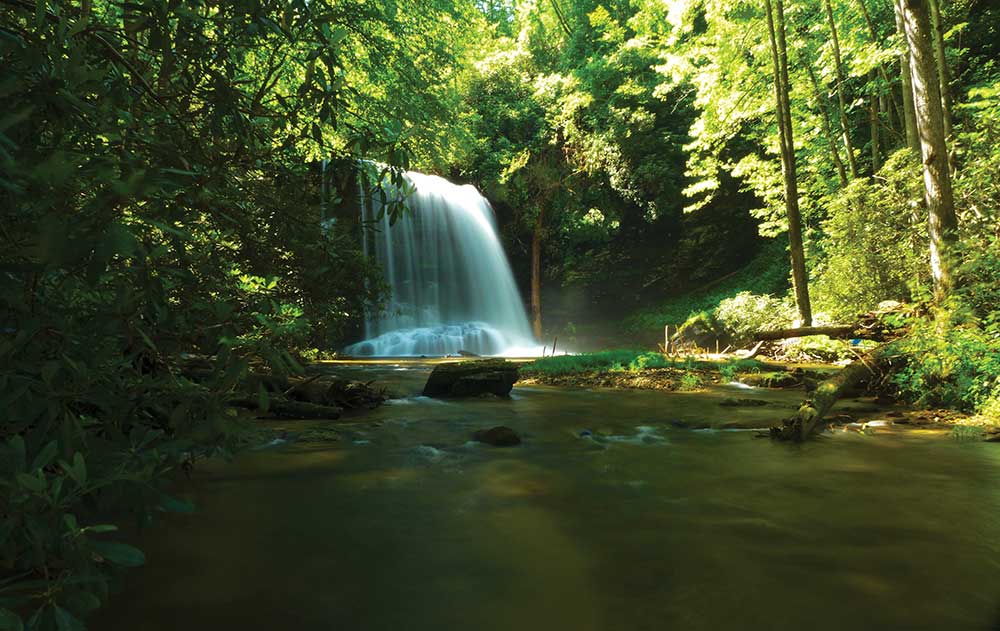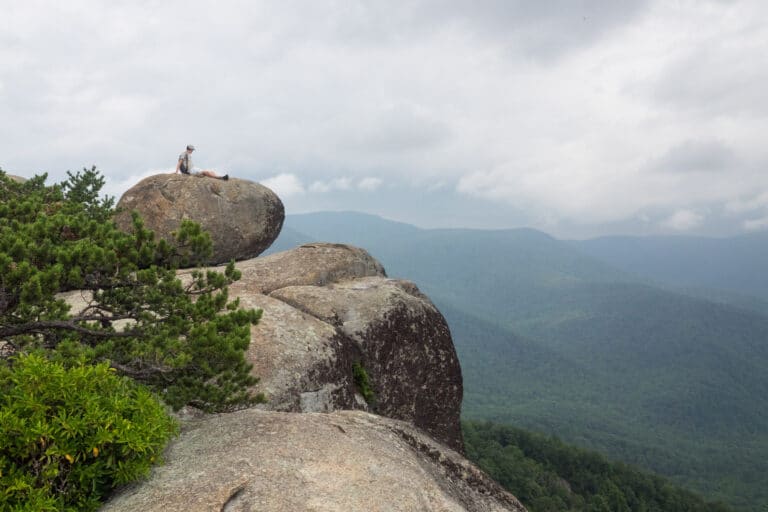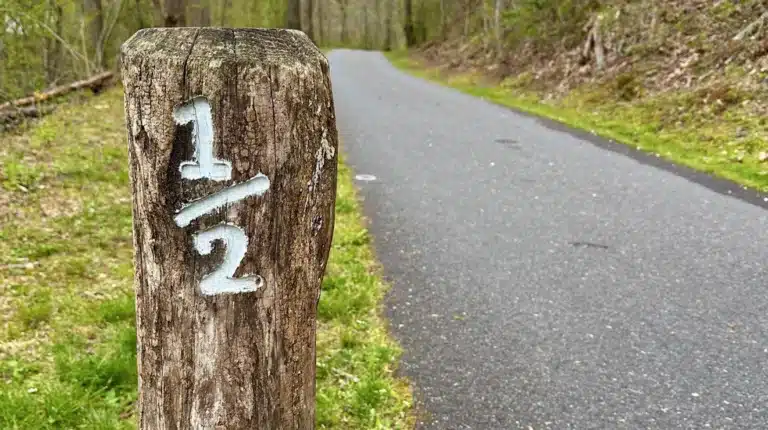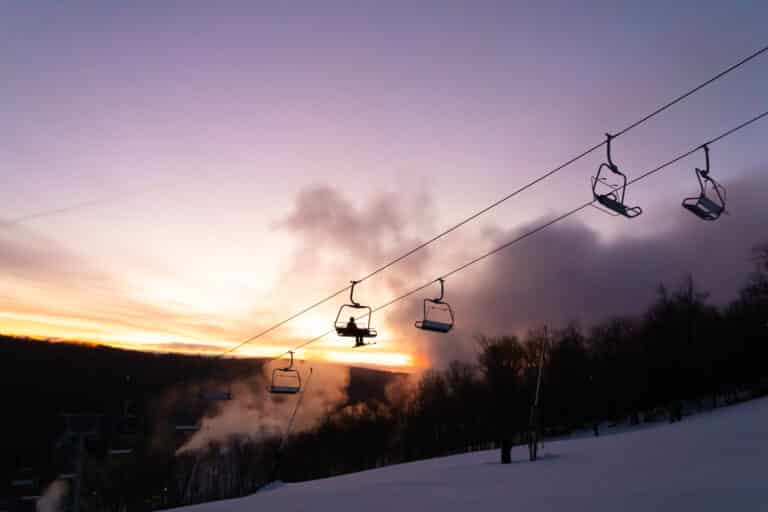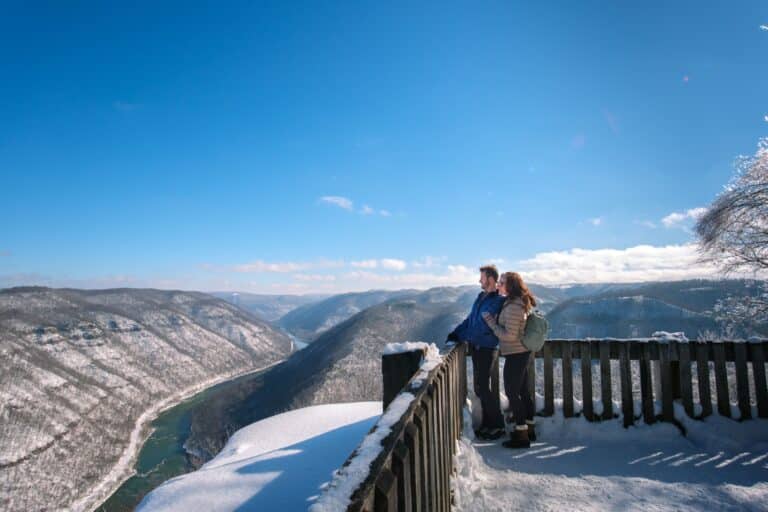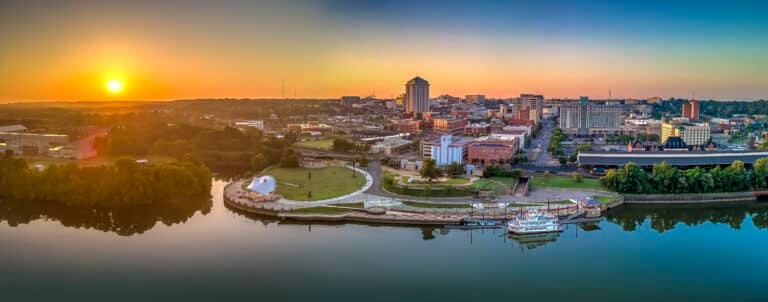20 years ago, Gorges became a state park instead of a hydroelectric dam, thanks to the efforts of one inspiring leader. Today, it’s still one of the most beautiful and best-kept secrets in Southern Appalachia.
Bill Thomas, taking in the views at Gorges State Park, thought about what this land could have been— a vast zone of hydroelectric projects, its famous waterfalls funneled through pipes, its wild rivers cooped up in basins designed to flush like toilets to produce surges of power.
He thought about what it has been instead for the past 20 years—a safely preserved wonderland of deep ravines, plunging rivers and rare plants.
And after some prodding, Thomas acknowledged the consensus of people who know the history of this property — that he, maybe more than any single person, led it away from the first fate and toward the second.
“I do think, well, I’ve done one good thing in my life,” he said.
In fact, Thomas, 91, a retired chemical engineer, made an unpaid, late-life career of doing good things for the environment, applying his passion for the outdoors and brilliant, Princeton-trained intellect to a series of causes, including the blocking of a luxury subdivision planned for the heart of DuPont State Recreational Forest.
He has served as chairman of the North Carolina Chapter of the Sierra Club and helped found and/or lead a mile-long list of other environmental organizations. He has received the chapter’s highest honor for long and outstanding service, the Joseph LeConte Award, and has been inducted into the Order of the Long Leaf Pine for his contributions to the state of North Carolina.
The celebration of the park’s 20th anniversary at the annual Gorgeous Gorges Colors event this coming October is the perfect time to celebrate Thomas’ legacy. But do more than lift a glass to Thomas, said Molly Diggins, Sierra’s longtime state director. View him as proof that one individual can make a huge difference for the environment. Hold him up as an inspiration and follow his example.
“He represents the best of what one tireless, committed individual can accomplish to preserve and protect outstanding land and water resources for the benefit of the natural world and the public,” Diggins said.
How Gorges Became a Park
To appreciate what Thomas did for Gorges State Park, think of it not as a stand-alone property but as part of the larger Lake Jocassee watershed. Also known as Jocassee Gorges, it is a freak of climatological and geologic nature that extends across the North Carolina-South Carolina line southwest of Asheville and has been named by National Geographic as one of fifty “World’s Last Great Places.”
The ancient crash of tectonic plates that created the Appalachian Mountains pushed up the Blue Wall on the southeast edge of the mountains and formed the bones of the lake’s basin and the maze of gorges above it. The 2000-foot wall catches moisture from clouds drifting up from the Gulf of Mexico, creating an annual average of 91 inches of rain (and a whopping 136 inches in 2018) that feeds four landmark rivers, the Thompson, Toxaway, Horsepasture and Whitewater. Their destination-worthy cascades include Whitewater, Rainbow, Turtleback and Windy falls.
The Wall also catches windblown spores from ferns and mosses. At least that’s one theory for the variety of rare and endangered species that can be found here and nowhere else on Earth. The endangered Oconee Bell wildflower, almost unknown in the wild outside of this watershed, grows abundantly within it.
Though the ecological and recreational value of these gorges seems obvious now, it was once appreciated only by a few intrepid scientists and hikers. In the 1980s, its potential was all about hydroelectric power.
Duke Energy, which owned about 60,000 acres in the region, had penciled in plans for several pump storage plants—designed to produce surges of electricity—on the Jocassee Gorges’ creeks and rivers. But the first active threat to the Jocassee Gorges came on one of the few large tracts in the basin that Duke didn’t own, 923 acres along the Horsepasture controlled by a company called Carrasan. It announced its plans to build a hydroelectric plant on the river in a tiny legal ad that ran in Brevard’s Transylvania Times newspaper on March 5, 1984. This caught the eye of the ever-attentive Thomas, which is one place to mark the start of his activism.
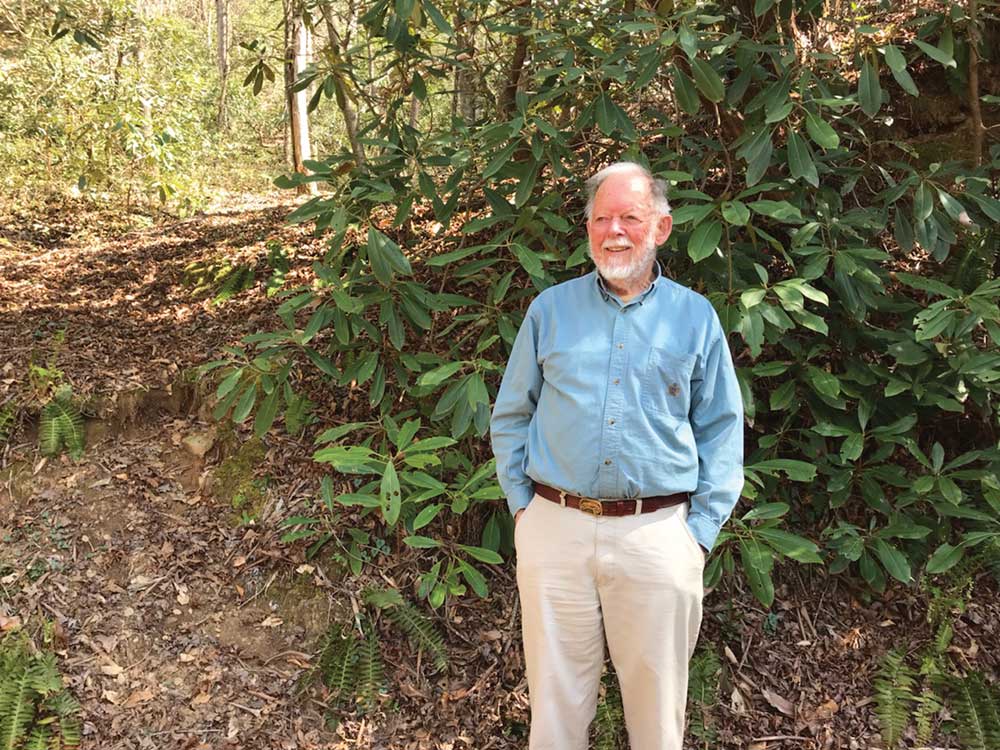
But his awakening actually began a few years earlier when he met his second wife, Shirl, who also deserves a Gorges anniversary toast. At the time, Bill Thomas was working at the DuPont plant near Brevard. He was a lifelong birder and hiker, but also a lifelong Republican, a Sierra Club member uncomfortable with its advocacy.
“After meeting Shirl,” he said, “I got retreaded.”
Once they saw the ad that threatened one of their favorite hiking spots, they set about researching the environment of the Jocassee Gorges and the approval process for Carrasan’s project. Meetings and phone calls consumed their evenings. Bill Thomas put the Xerox machine in his DuPont office into overdrive pumping out promotional literature.
He and Shirl, he said, were too naive to know that such environmental crusades typically advance at glacial speed. This one moved like an avalanche. With a few early allies, they formed a group called Friends of the Horsepasture River, “which we realized later could form a neat acronym, FROTH,” Bill Thomas wrote in a 2015 book he published on the effort, Dam it, No!! Powerful supporters quickly jumped on board, including Mike Leonard, then a young lawyer and now the chairman of the nationwide Land Conservation Fund. And a mere 2 ½ years after the founding of FROTH, it achieved its ultimate goal — federal designation of the Horsepasture as a Wild and Scenic River, signed into law in October 1986 by President Ronald Reagan.
“I think the biggest high I ever had in my life was when the Horsepasture got protected,” he said.
There’s an old saying that activists are divided among tree shakers— the inspirational, visionary types, and jelly makers—who do the sustained, detailed work. Thomas is both.
“Bill was the superstar,” Leonard said. “Bill was very key to leading the charge and building public support.”
He also stuck to it through the process of acquiring and protecting the watershed — including more than 7,000 acres that became Gorges State Park — even though it proceeded at the more typical pace of environmental action. Very slowly.
He retired from DuPont in 1989 to start a stint as statewide Sierra Club chairperson. He traveled to Washington D.C. to persuade federal lawmakers to acquire key portions of the old Carrasan property, now part of the Nantahala National Forest. He fought to block a powerline that ended up being built through the park. “We got our heads beat down on that one,” he said. And after Duke let it be known it was willing to sell its land in the mid 1990s, Thomas was Sierra’s point person on the creation of the park, putting him in the thick of the negotiations with hunters who at one point threatened to withdraw support for the acquisition. He played a crucial role in “elevating this issue among Sierra members,” said Diggins, which gave her the backing to lobby state lawmakers. And he did a fair amount of lobbying himself, seeking not only that the land be purchased but that most of it be designated as a state park.
“That was a high bar,” Diggins said. “The state did not have a history of land acquisition for state parks or natural conservation.”
One of his lobbying tools was a Jocassee Gorges hiking guide that Steve Pagano, park superintendent during its first 19 years, said might still be the best one published. Its maps and photos were supplemented with detailed passages on history, ecology and geology. No matter what issue he took on, Diggins said, he seemed to know every ecological asset, every threat, every political and bureaucratic key that needed turning.
His commitment to the park continued long after its formation. Thomas has been a member of park’s advisory committee since its founding. He long pushed for a Friends of Gorges State Park and served on it for several years after its creation nearly a decade ago.
“I’d put him on top of the list of (volunteers) making the park happen and making it work,” said Superintendent Pagano.
Thomas knows his generation of activists is passing. He has dialed back on some of his commitments. He and Shirl are no longer the super-fit, avid hikers that smile from the banks of the Horsepasture in the photos of Dam it. Thomas lamented in an email that he could provide only a short list of contacts for former FROTH members. “All the others are gone.”
But he has been blessed with health that others might seem as a karmic reward for his good work but that he views as merely a pleasant mystery. He and Shirl still walk nearly every day in the community of tree huggers near Brevard where they settled in 1998. He still works on its trail-building crew. He still organizes its nature programs and sends out email blasts alerting residents to sightings of black bears and hummingbirds. When his friends describe his mental sharpness, they are not grading on the usual nonagenarian curve.
“Bill is more intellectually engaged on a wider variety of subjects than anyone I’ve ever met,” said his old friend and neighbor, Gus Napier. “He’s interested in everything!”
I observed firsthand his acuity and passion for nature, on a trip to the Gorges with Thomas and park ranger Neal Wilcox. As we drove deep into the backcountry in a four-wheel drive pickup, Thomas let out spontaneous exclamations of enthusiasm. “Fantastic!” is a Thomas favorite. He explained how geology and erosion had created the vertiginous slopes of the gorges that Wilcox navigated. He identified the species of each bird that called and of the ground-hugging halberd violets and midstory silverbell trees.
Dressed in khakis and well broken-in leather hiking boots, he handled a short hike to Bearwallow Creek with ease, bushwhacking through briars and up and down muddy embankments. Wilcox commented on this, Thomas’ fitness, but his words could also apply to Thomas’ work for the natural world, the example he has set for younger environmentalists.
“Bill, you’re my hero,” Wilcox said. “I want to be you when I grow up.”
Cover photo by Brenda J. Wiley
